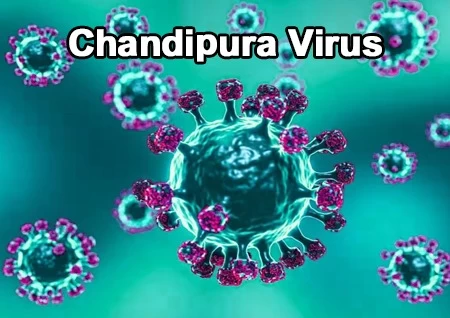Gujarat Battles Chandipura Virus: 101 Child Deaths Amid Viral Epidemic

A total of 101 children in Gujarat have died from viral encephalitis out of 164 documented cases, with 61 of those cases directly attributed to the Chandipura virus, according to the state's Health Minister, Rushikesh Patel.
Speaking before the State Legislative Assembly on Wednesday, Patel revealed that since the first case was reported in July, the Chandipura virus outbreak has claimed the lives of 28 children under the age of 14.
In response to a question from Aam Aadmi Party (AAP) member Umesh Makwana, Patel confirmed that Gujarat has recorded 164 cases of viral encephalitis, resulting in 101 child fatalities. Of these cases, 61 were specifically caused by the Chandipura virus, which is known to trigger fever, flu-like symptoms, and severe brain inflammation. The virus is primarily transmitted through vectors like sandflies and mosquitoes.
The health minister assured the assembly that the situation is now under control, noting that no new cases have been reported in the past week and there have been no fatalities in the last twelve days.
The first Chandipura-related death in Gujarat was reported on July 17, following the death of a four-year-old boy from Aravalli in a government hospital in Sabarkantha.
Patel informed the assembly that the sandfly, which carries the Chandipura virus, typically hides in the cracks and crevices of mud houses common in Gujarat's rural areas. In response to the outbreak, the state government has launched an extensive campaign to contain the virus and control the vector population.
As part of this effort, health officials have surveyed over 53,000 affected households and applied Malathion powder in more than 7 lakh village mud houses. Additionally, nearly 1.58 lakh homes have been treated with liquid pesticide. The campaign has also extended to over 36,000 Anganwadis and around 40,000 schools in the affected districts, recognizing the heightened risk to children.
The Chandipura virus (CHPV), a member of the Rhabdoviridae family and closely related to the vesicular stomatitis virus, was first identified in 1965 in Chandipura, a village in Maharashtra, India. The virus primarily spreads to humans through the bite of an infected sandfly, though other insects may also play a role. Isolated cases of the virus have been reported in various regions of India, with past outbreaks occurring in Andhra Pradesh, Gujarat, and Maharashtra.
Related queries to this article
- Chandipura virus outbreak Gujarat
- viral encephalitis in children
- Gujarat health crisis
- encephalitis epidemic India
- sandfly vector-borne diseases
- mosquito-borne viral infections
- Rhabdoviridae family viruses
- Chandipura virus deaths
- Gujarat government containment measures
- viral encephalitis prevention
- children health crisis India
Read more articles and stories on InstaSity Trending Topics.